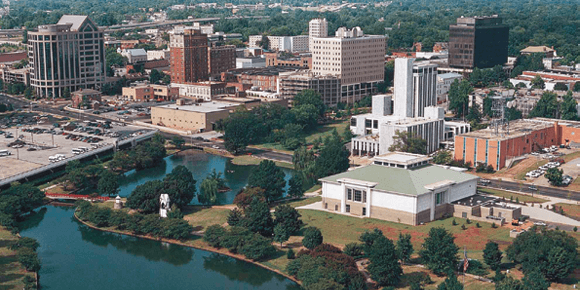Looking at what makes up gentrifying, ethnic, retirement and unfamiliar neighborhoods.
 Gentrifying
Gentrifying
TREND SPOTTING
Five tips to identify a gentrifying neighborhood thats about to turn:
- Read local business press to find out which commercial corridors are growing. Walkabilty is critical to certain homebuyers.
- Attend local planning meetings to find out if the city, state or federal government is about to invest in an areas infrastructure.
- Educate yourself on the more historic neighborhoods in your area. Architectural charm can be a gentrification driver.
- Track new employment hubs. Some people will take a chance on a neighborhood in exchange for a shorter commute.
- Educate yourself on the neighborhoods surrounding the current hot neighborhoods. Gentrification can be contagious.
Williamsburg in Brooklyn, Wicker Park in Chicago and downtown Los Angeles are some big-league examples of gentrifying neighborhoods, but the phenomenon isnt limited to large cities.
A gentrifying neighborhood is often an older area that has seen better days. It may be rough around the edges, but the bones are good.
For instance, the old millworker housing in the neighborhoods around the Five Points Historic District of Huntsville, Alabama, is on the upswing. One of the big reasons, according to Lea Ellison, CRS, of Crye-Leike REALTORS® in Huntsville, is because buyers are looking to be close to downtown.
My clients who buy there talk over and over again about walkability and bikeability to downtown, she says. Theres also the charm of the neighborhood and something I call rootedness. In the older neighborhoods, you dont feel like you are in a transient place.
However, a gentrifying area doesn’t have to be historic. In Sister Bay, Wisconsin, a federal transportation and infrastructure project that started about 15 years ago is ending this spring, and, as a result, this area is taking off.
The project has brought unencumbered public access to the shore near a revitalized downtown, along with the construction of a shoreline amphitheater and a kayak launch area. Located in Door County, a popular vacation area, Sister Bay is investing in year-round amenities to draw full-time residentsand its working.
Sister Bay has developed everything that a person could want in a small town setting, from doctors to dentists to lawyers, says MaryKay Shumway, CRS, of Kellstrom-Ray Agency in Sister Bay. We have the only pharmacy north of Sturgeon Bay.
Neighborhood Watch: Huntsville, Alabama
The Tale of a First-Time Investor
Lea Ellison, CRS, of Crye-Leike REALTORS® in Huntsville, Alabama, says about half of her clients in the gentrifying neighborhoods near the Five Points Historic District in Huntsville are investors.

The city of Huntsville has been the fastest growing major city in Alabama over the past 15 years. The city is projected to reach 200,000 residents by 2020 and become the largest city proper in Alabama by 2022.
In 2015, one of her investor clients decided to buy an 811-square-foot two-bedroom, one-bath house in the area for $52,000. It was on a large corner lot, but on the outer edge of what had been gentrified so far. He planned to renovate and sell.
Her client spent about nine months fixing up the house, doing a lot of the work himself. He restored the natural pecan floors, renovated the kitchen, updated the bathroom and added a 45-square-foot laundry room to the back of the house.
The original exterior had cedar shingles, many of which were rotted. He pulled off all the shingles and saved the ones that were still usable, Ellison says. He insulated the house and put HardiePlank back up around most of it, using the salvageable cedar shingles on the front to keep the feel of the period of the house.
In the end, he spent $46,000 on the renovation, a bit more than his budget.
But the good news was that he sold it in 23 days with multiple offers, Ellison says. The sale price of $112,900 gave him a profit of about $10,000. That was $132.05 per square foot. The highest sale in that part of the neighborhood before had been $105 per square foot.
The city of Huntsville has been the fastest growing major city in Alabama over the past 15 years. The city is projected to reach 200,000 residents by 2020 and become the largest city proper in Alabama by 2022.
 Ethnic
Ethnic
Americans love their ethnic neighborhoods. We call out a communitys heritage with gusto, inviting all to its streets lined with shops and eateries true to the neighborhoods ethnic roots. And these communities are as vast and varied as the worlds map.
This attraction to diverse, cultural neighborhoods often leads new residents into their boundaries, and savvy agents may see their businesses expand to include previously unexplored territories. But working as a real estate agent in historically ethnic neighborhoods means following specific legal and ethical guidelines (read about the Fair Housing Act on p. 25) that dictate how an agent can position, or even just talk about, these areas. Even when a neighborhood is shouting its ethnic makeup from the streets, like the Puerto Rican flags flying over Division Street in Chicagos Humboldt Park or the unmistakable Dragon Gate entrance to San Franciscos Chinatown, it doesn’t mean a REALTOR® can do the same.
In ethnic neighborhoods, it is even more important for buyers to see the neighborhoods for themselves and do their own research. Wendy Furth, CRS, broker and owner of Furth & Associates in Encino, California, who does a lot of business in Koreatown, says a walk through the neighborhood would reveal that its a Korean neighborhood from the signage alone, but that doesn’t tell buyers everything they need to know. When they do their own research, they find that the demographic breakdown tells another story, Furth says.
When working in these neighborhoods, agents have to find ways to let the neighborhood speak for itself.
 Retirement
Retirement
Retirement living is as much about mental states as geographic states. Retirement might involve a community across town or across the country, be in a defined neighborhood or just a specific building. No matter which choice is made, the end game requires lifestyle changes.
5.4%
beating out the next closest city by over 2%.
Around 10,000 people retire every day, says Ben Staten, CRS, of Red Hot Atlanta Homes in Woodstock, Georgia. Its a growing market as boomers retire and look to downsize. Staten, along with his partner, Kathy Seger, has focused on the retirement market for several years, and it currently accounts for 80 percent of his business. Seger and Staten concentrate on individuals generally known as active adultsseniors aged 55 and older, who are newly retired and plan to live in a neighborhood for at least a decade.
In the Atlanta market, there are three types of retirement communities, Staten explains. Mega communities have resort-style amenities, including clubhouses, indoor/outdoor pools and full-time activity directors. These tend to be about 1,000 single-story detached homes.
Then there are medium-sized neighborhoods with a clubhouse, but its usually a lot smaller, Staten says. These run from 80 to 150 attached or detached homes. There are also smaller neighborhoods that might have 40 to 50 homes.
All three types of communities are essentially lock-and-leave because no yard maintenance is involved, he says. The other big draw of these, and many senior living communities, is one-level living. These communities also allow for socialization with neighbors. Everyone is retired and at the same stage in their lives. If someone doesnt see you walking your dog, they will check on you, Staten says.
In the San Antonio, Texas, market, one retirement destination is a Del Webb community northwest of the city, which will not be completely built out for five to 10 years, says Lisa Weissgarber Harder, CRS, SRES, of RE/MAX Associates in San Antonio. She says that many older people move to the area from the North for milder weather and for the competitive real estate prices and low property taxes.
The community of Sequim, Washington, was not planned with retirees in mind. It is simply a market-driven retirement community, explains Michael McAleer, CRS, of RE/MAX Prime in Sequim. Sequim has shown up for years on national lists of great places to retire. You cant sell real estate here without selling to retirees.
The town is on the Olympic Peninsula and has an area population of 30,000. To the immediate south are the Olympic Mountains and to the north are stunning views of the Straits of Juan de Fuca and Victoria, British Columbia.
In the south bay area of Los Angeles, housing for older seniors tends to be multi-unit buildings with 50 to 100 apartments.
It is not assisted living; they are retirement centers for independent living, says Denise ONeil, CRS, of ONeil & Associates Realtors in Redondo Beach, California. Buildings are compliant with the Americans with Disabilities Act and typically have walk-in showers, latches instead of door knobs, and grab bars. A lot of them have recreational rooms on the main floor, she adds.
Neighborhood Watch: Hill Country Retreat, San Antonio, TX
 Unfamiliar
Unfamiliar
When youre a REALTOR®, being well-established in the neighborhoods where you work is an enormous advantage. However, whether youre just breaking in as a new REALTOR®, moving to a new area or simply expanding the neighborhoods you service, there will be a time when you need to establish yourself in an unfamiliar neighborhood.
Neighborhoods may be defined by geographic boundaries, subdivisions, homeowners associations or other factors. And while being the new kid trying to make a mark can seem like a daunting task, following in the footsteps of people whove done it well can make the process much easier.
In 2007, Kristin Walter, the managing broker of Innovative Real Estate Group in Summit County, Colorado, was ready for a move. After being a real estate investor in Sarasota, Florida, she set out for Denver, where she didn’t know a soul, and decided to get her real estate license.
The move was a gutsy one and plunged Walter into a frenetic time of learning the business, familiarizing herself with inventory and making contacts. She visited various neighborhoods in Denver and learned as much as she could about her new home. She previewed as many homes as possible and pored over both tax records and the last five years of sales in the Multiple Listing Service (MLS) to learn about trends in the area and figure out what was selling. She wanted to be sure that when people called, she was well-versed in the areas about which her clients inquired. At the same time, she busied herself getting involved in community groups and marketing her business to attract clients.
Instead of geographic boundaries, Nicole Smith, CRS, of Briggs Freeman Sotheby’s International Realty in Southlake, Texas, used more of a behavioral target market boundary, she says. After specializing in the Dallas/Fort Worth, Texas, area for more than 20 years, she moved to Flower Mound, Texas, a suburb just outside of her typical urban neighborhoods. She didn’t want to go head-to-head with people who already worked in particular subdivisions, so she set a goal to create a list of 500 target homes within a certain price range$400,000 to $800,000that hadn’t sold since 2008.
The average American moves every six to eight years, so I thought that if I was hitting someone who had been in the house for eight years, I had a greater chance they would be selling in the next two to three years, Smith says. By zeroing in on sellers who were statistically more likely to be ready to move, she has been happily surprised by the response she has received, landing a few listing appointments and making contact with a local builder in just a few months, she says.







